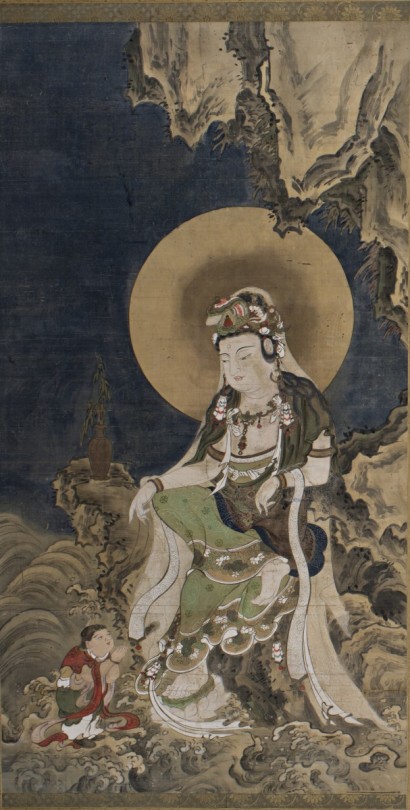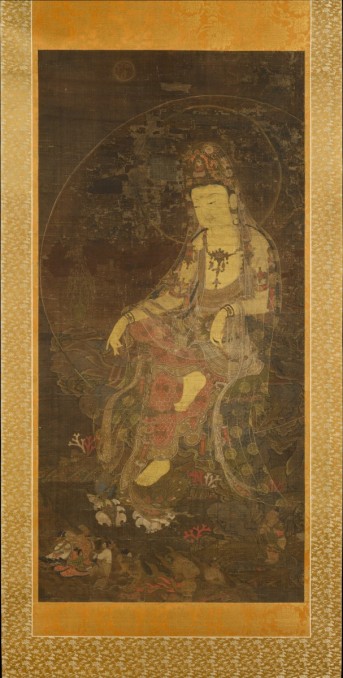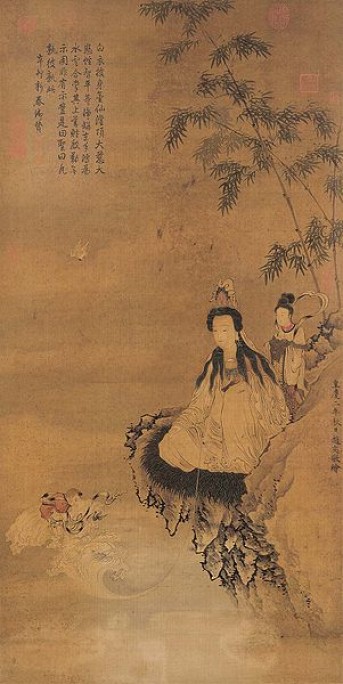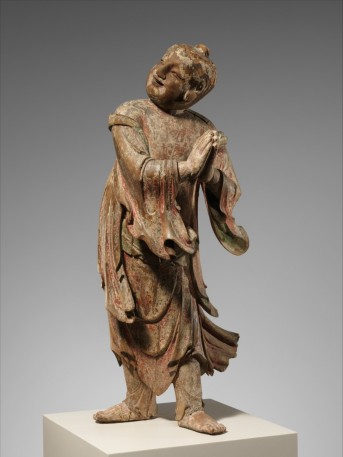Japan, Edo period, 1615–1868; hanging scroll, ink and color on silk; image: 61 7/8 x 33 in., mount: 87 7/8 x 39 1/2 in.; The Frances Lehman Loeb Art Center, Vassar College, Gift of Daniele Selby ’13, 2014.20.1.
This scroll depicts Avalokiteshvara, known in Japan as Kannon, in his mythical dwelling Fudarakusan, which is portrayed as a rocky outcropping above swirling waves. Here he adopts the form of the Water-Moon Kannon, one of his numerous guises. Shown seated in a posture of ease, Kannon is attired in resplendent robes and elaborate jewels. The willow branch, which can heal illnesses and bring fulfillment to devotees’ requests, is displayed in a vase to the figure’s right. The boy Sudhana, who is on a spiritual pilgrimage, stands at Kannon’s feet in a pose of veneration. He is in search of ultimate truth and enlightenment. LL







